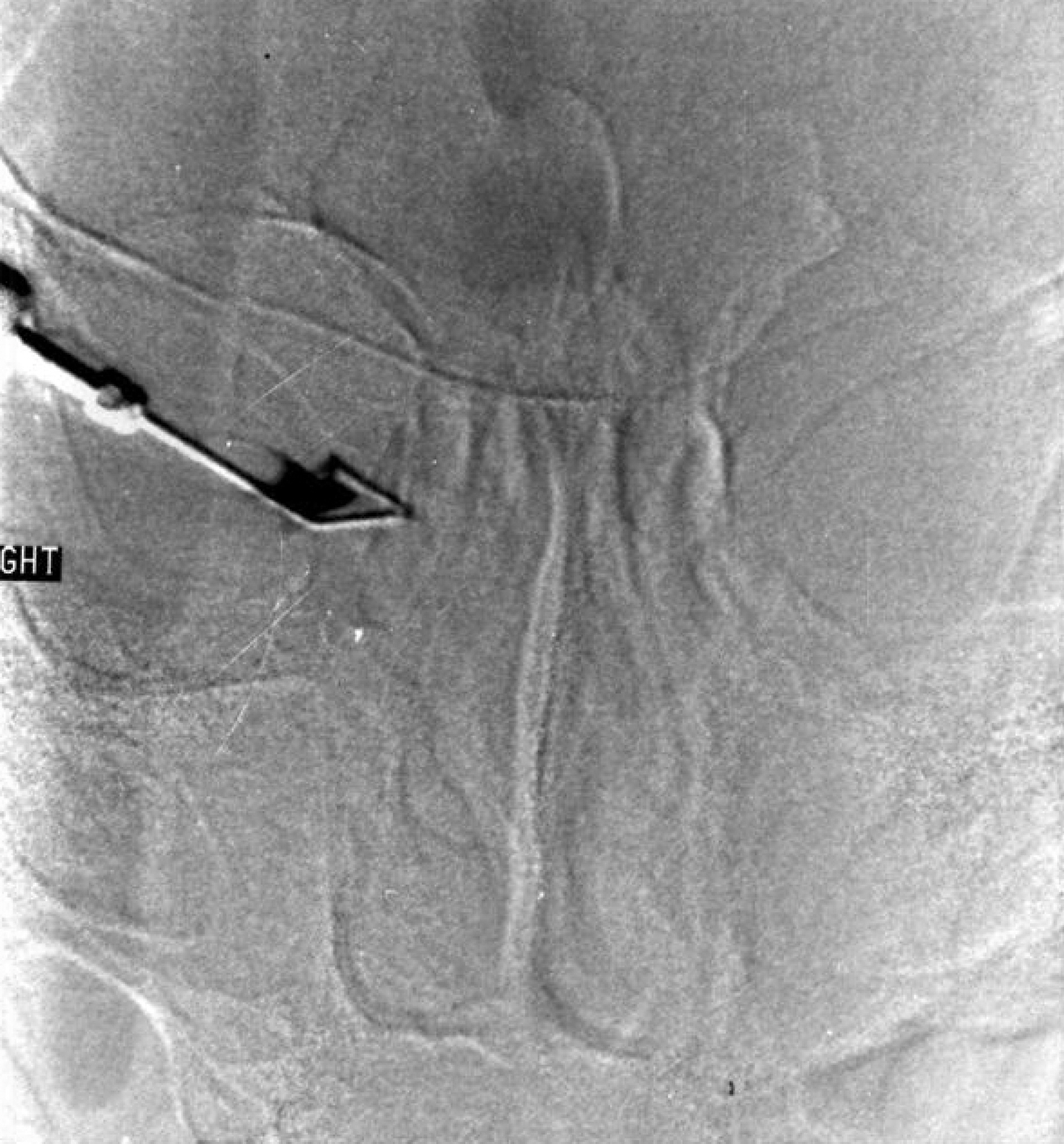J Korean Ophthalmol Soc.
2007 Sep;48(9):1170-1176.
The Surgical Results of Endonasal DCR with Two Silicone Tubes in Common Canalicular Obstruction
- Affiliations
-
- 1Department of Ophthalmology, Wonkwang University College of Medicine, Iksan, Korea. sangduck@wonkwang.ac.kr
Abstract
-
PURPOSE: To evaluate the surgical results of endonasal dacrocystorhinostomy with two silicone intubation in common canalicular obstruction.
METHODS
Forty patients (57 eyes) who complained of tearing due to common canalicular obstruction underwent endonasal dacryocystorhinostomy. In this study, We randomly divided patients into two groups. One group underwent one-silicone tube intubation (29 eyes, group A) and the other group underwent two-silicone tube intubation (28 eyes, group B). After surgery, we compared the success rates and the causes of surgical failure between the two groups.
RESULTS
There were no significant differences between the two groups with regard to age, sex, duration of silicone intubation, or follow-up time. The primary success rates of the group A and the group B were 65.5% (19/29) and 85.7% (24/28) [(P=0.078)], respectively. the final success rates after the revisional surgery were 76.4% (21/29) and 92.8% (26/28) [(P=0.043)] respectively. Primary causes of surgical failure in the group A were: membranous obstruction of the internal ostium (6), common canalicular re-obstruction (2), sump syndrome (1), and functional obstruction (1). The main causes of surgical failure in the group B were: membranous obstruction of the internal ostium (2), and granuloma formation (2).
CONCLUSIONS
We believe that endonasal dacryocystorhinostomy with two-silicone tube intubation might be an excellent alternative treatment modality in order to improve success rates in common canalicular obstruction.
MeSH Terms
Figure
Reference
-
References
1. Jones BR. The surgical cure of observation in the common lacrimal canaliculus. Trans Ophthalmol Soc U K. 1960; 80:343.2. Jones LT. The cure of epiphora due to canalicular obstruction or trauma and surgical failures of the lacrimal passage. Trans Am Acad Ophthalmol Otolaryngol. 1962; 66:506–24.3. Welham RA. Canalicular obstruction and the Lseter Jones tube: What to do when all else fails. Trans Opthalmol Soc U K. 1973; 93:623–32.4. Bartley GB, Gustafson RO. Complication of malformationed Jones tubes. Am J Ophthalmol. 1990; 109:66–9.5. Rosen N, Ashkenazi I, Rosner M. Patients dissatisfaction after functionally successful conjunctivodacryocystorhinostomy with Jones tube. Am J Ophthalmol. 1994; 117:636–42.6. Yung MW, Hardman-Lea S. Analysis of the results of surgical endoscopic dacryocystorhinostomy: effect of the level of obstruction. Br J Ophthalmol. 2002; 86:792–4.
Article7. Delaney YM, Khooshabeh R. External dacryocystorhinostomy for the treatment of acquired partial nasolacrimal obstruction in adults. Br J Ophthalmol. 2002; 86:533–5.
Article8. Jeong JY, Chung WS, Lee KH. Surgical effect of canaliculodacryocystorhinostomy. J Korean Ophthalmol Soc. 1999; 40:13–20.9. You YG, Choi HS, Ryou JH, Kim SJ. The result of endoscopic canaliculocystodacryorhinostomy with two sets of silicone tube intubation in canalicular obstruction. J Korean Ophthalmol Soc. 2004; 45:882–6.10. Boush GA, Lemke BN, Dortzbach RK. Results of endonasal laser-assisted dacr yocystorhinostomy. Ophthalmology. 1994; 101:955–9.11. Camara JG, Santiago MD. Success rate of endoscopic laser-assisted dacryocysto rhinostomy. Ophthalmology. 1999; 106:441–2.12. Hartikainen J, Grenman R, Puukka P, Sepp H. Prospective randomized comparison of external dacryocystorhinostomy and endonasal laser dacryocystorhinostomy. Ophthalmology. 1998; 105:1106–13.
Article13. Anderson RL, Edwards JJ. Indications, complications and results with silicone stents. Ophthalmology. 1979; 86:1474–87.
Article14. Allen K, Berlin AJ. Dacryocystorhinostomy failure: association with nasolacrimal silicone intubation. Ophthalmic Surg. 1989; 20:486–9.
Article15. Lee TS, Kim JS, Kim JK. The effect of double silicone tube intubation on surgical outcome of endonasal dacryocystorhinostomy. J Korean Ophthalmol Soc. 2002; 43:2089–94.16. Kim YD, Lee JJ. The surgical results of dacryocystorhinostomy with internal punctoplasty for common canalicular obstruction. J Korean Ophthalmol Soc. 1996; 37:1979–83.17. Kong BD, Kim SD. The Surgical Results of Common Canaliculo-Dacryocystorhinostomy. J Korean Ophthalmol Soc. 1999; 40:2362–66.18. Park BS, Jang JW, Byon DS. Treatment of common canalicular obstruction using lacrimal trephine. J Korean Ophthalmol Soc. 1998; 39:1077–81.19. Sisler HA, Allarakhia L. A new ophthalmic microtrephine. Ophthalmic Surg. 1990; 21:656–7.
Article20. Kim Y, Oh SU, Lee HC. Silicone intubation for canalicular or common canalicular obstruction in adult. J Korean Ophthalmol Soc. 2001; 42:1655–60.21. Hatt M. Surgery of acquired canalicular stenosis. Orbit. 1992; 11:153–6.
Article22. Ra H, Na TY. Bicanalicular silicone tube intubation after simple probing in common canalicular obstruction. J Korean Ophthalmol Soc. 2004; 45:540–5.23. Kim DY, Chang SD, Ahn Y. Canalicular trephination with lacrimal trephine and endoscopic DCR. J Korean Ophthalmol Soc. 2003; 44:2213–21.24. Hausler R, Caversaccio M. Microsurgical endonasal dacryocystorhinostomy with long term insertion of bicanalicular silicone tubes. Arch Otolaryngol Head Neck Surg. 1998; 124:188–91.25. Kao SC, Liao CL, Tseng JH. Dacryocystorhinostomy with intraoperative mitomycin C. Ophthalmology. 1997; 104:86–91.
Article26. Yeatts RP, Neves RB. Use of Mitomycin C in repeat dacryocystorhinostomy. Ophthal Plast Reconstr Surg. 1999; 15:19–22.
Article27. Snead J, Rathbun JE, Crawford JB. Effects of the silicone tube on the canaliculus: an animal experiment. Ophthalmology. 1980; 87:1031–6.28. Ferda C, Dilaver E, Levent C, et al. Histopathologic change in the lacrimal sac of dacryocystorhinostomy patients with and without silicone intubation. Ophthal Plast Reconstr Surg. 2005; 21:59–64.29. Sisler HA, Allarakhia L. New minitrephine makes lacrimal canalicular rehabilitation an office procedure. Ophthal Plast Reconstr Surg. 1990; 21:656–7.30. Patel BC, Phillips B, McLeish WM, et al. Transcanalicular neodymium: YAG laser for revision of dacryocystorhinostomy. Ophthalmology. 1997; 104:1191–7.
Article
- Full Text Links
- Actions
-
Cited
- CITED
-
- Close
- Share
- Similar articles
-
- Comparison of the Efficacies of 0.94 mm and Double Silicone Tubes for Treatment of Canalicular Obstruction
- Surgical Outcomes of Endonasal Revision Surgery for Failed DCR According to Number of Silicone Tubes
- The Results of Revisional Surgery for the Failed Endonasal DCR
- The effect of double silicone tube intubation on surgical outcome of endonasal dacryocystorhinostomy
- Surgical Results of Modified Dacryocystorhinostomy


